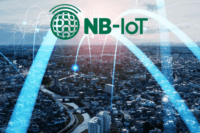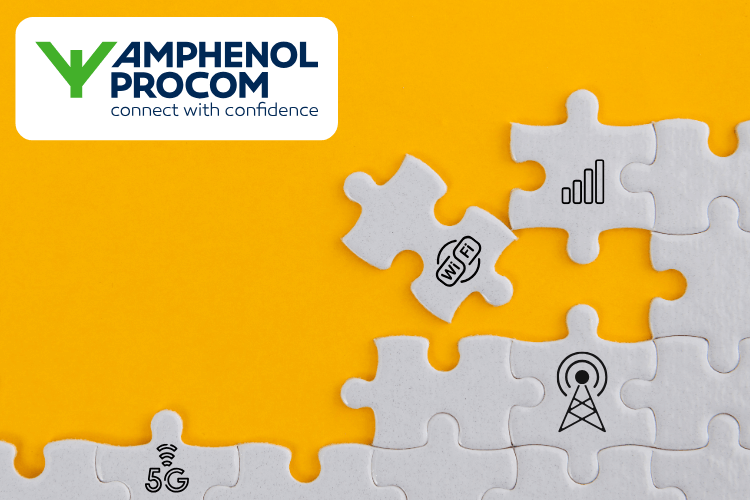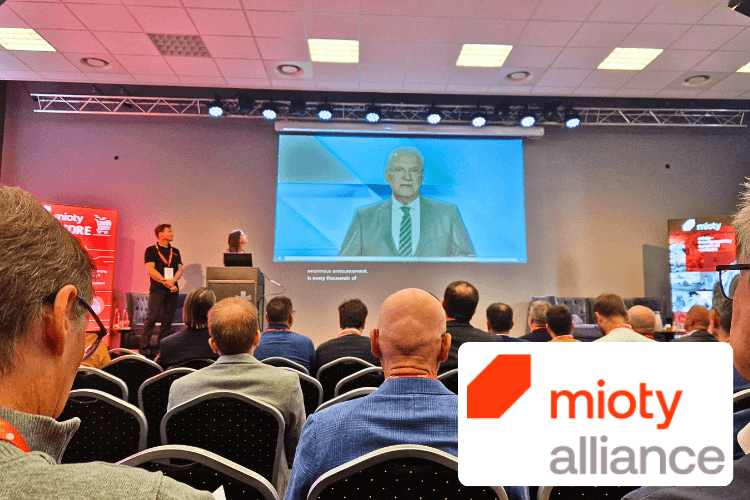NB-IoT simply explained

The rapid growth of the IoT ("Internet of Things") has led to new communication technologies that have been specially developed to meet the increasing requirements for energy efficiency, range and network availability. One of the leading standards is Narrowband IoT (NB-IoT) and LoRaWAN, which are characterized by their low energy consumption, very good building penetration and reliable data transmission. For example, NB-IoT offers ideal conditions for applications such as smart metering, asset tracking or smart city. By using the existing LTE mobile network, companies can also network devices across widely distributed locations - even in areas that are difficult to access.
What is NB-IoT?
NB-IoT stands for Narrowband-IoT and belongs to the LPWAN technologies (Low Power Wide Area Networks). The wireless technology was specially developed for the communication of devices in the Internet of Things (IoT). NB-IoT is technically based on the LTE mobile communications standard and is defined under the specifications LTE Cat NB1 (first generation) and LTE Cat NB2 (enhanced version with additional functions). Both variants use frequencies of the general mobile network.
But unlike LTE or 5G, which are designed for high data rates and bandwidths, NB-IoT focuses on particularly low-power, stable communication over long distances - even in areas that are difficult to access, such as basements, shafts or rural areas.
The network is also very secure, as it uses the LTE security mechanisms according to 3GPP. This means that NB-IoT enables reliable, energy-efficient and cost-effective data transmission for devices with low data volumes and uses existing mobile networks.
Why is NB-IoT particularly relevant for M2M and IoT?
M2M and IoT communication places special demands on network technology: many devices only send infrequent and small amounts of data, but do so constantly over a longer period of time, sometimes over several years, and therefore require a reliable connection, regardless of location and infrastructure.
This is exactly where Narrowband IoT comes in:
- Energy efficiency: Thanks to optimized protocols and low transmission power, sensors and devices with NB-IoT can often be operated for over 10 years on a single battery.
- High building penetration: NB-IoT offers excellent signal strength even in shielded environments such as buildings and basements, making it ideal for applications such as smart metering.
- Scalability: A single cell tower can serve thousands of NB-IoT devices simultaneously - ideal for smart city and Industry 4.0 scenarios.
In this way, devices such as sensors or actuators can communicate with each other and enable efficient processes and services.
Functionality and technical background
In Europe, narrowband IoT mainly operates in the 800 MHz (band 20) and 900 MHz (band 8) frequency bands, and sometimes also in the 1800 MHz band (band 3). The low frequencies (800/900 MHz) ensure a long range and very good building penetration, as long-wave signals penetrate obstacles such as concrete walls better than high-frequency LTE signals. As these frequencies are part of the general mobile network, the use of the frequencies is subject to a charge, unlike LoRaWAN*, for example.
*Additional costs may also arise here due to the use of commercial LoRaWAN network servers.
| Technical properties | Explanation |
|---|---|
| Frequencies | in Europe 800 MHz (band 20) and 900 MHz (band 8), partly also in the 1800 MHz band (band 3) |
| Data rates | Uplink (sending from device to cloud): approx. 66 kbps (theoretically up to 180 kbps with optimized configuration), downlink (receiving from network to device): approx. 180 kbps, similar or slightly lower in practice |
| Reach | Up to 10 km in rural areas or to the nearest transmitter mast (open terrain, few obstacles), up to 2 km in urban areas, depending on network availability and building density) |
| License costs and usage | An NB-IoT-capable SIM card is required to use the network. Access is provided by a mobile network operator, which provides the infrastructure and the network. The running costs are low compared to traditional mobile phone tariffs, as only small amounts of data are transferred. There are special IoT tariffs, often with long terms (e.g. 10 years), low data volumes and low prices. |
| Strengths | Very good building penetration (down to basements or shafts), devices connect directly to the mobile network, no gateways are required. |
Availability of NB-IoT in Germany
Narrowband IoT is available nationwide in Germany thanks to the active expansion by the major mobile network operators. The technology is operated by Telekom Deutschland, Vodafone and Telefónica (o2) in the licensed frequency spectrum and can now be used in almost all regions, both in urban and rural areas.
Deutsche Telekom achieved almost complete coverage in its LTE network at an early stage. Vodafone also operates a nationwide NB-IoT network that reaches industry, cities and municipalities. Telefónica also offers increasing network coverage for IoT applications in the LTE network with NB-IoT support.
In practice, companies with NB-IoT-enabled SIM cards or eSIM solutions can implement projects nationwide - from individual locations to large-scale rollouts. Roaming in other European countries is also supported by many providers, making NB-IoT the ideal solution for international IoT devices.
Typical areas of use and application examples
smart metering
- Recording and optimization of energy consumption, reading of electricity, gas, water or heat meters, connection of existing energy meters also possible (e.g. Modbus RTU
Smart City
- Intelligent street lighting, street lamps automatically adjust to the time of day or traffic volume, they also detect and report faults automatically.
- Parking space management: Sensors in or under parking spaces detect whether a parking space is occupied and forward the information in real time to navigation systems or parking guidance systems.
- Waste management: fill level sensors report when containers need to be emptied - this saves unnecessary trips.
smart farming
- Monitoring of soil moisture and weather data to optimize irrigation
- Detection of fill levels (tanks and silos for e.g. fertilizer, animal feed)
- Animal tracking or condition monitoring of grazing animals
- Early warning systems for frost, pest infestation or environmental risks
Fleet management
- NB-IoT improves fleet management: vehicles can be equipped with NB-IoT trackers that continuously transmit the vehicle status. Fleet managers thus receive real-time information about their vehicles and maintenance requirements can be identified and planned at an early stage. This reduces downtime. The improved monitoring and control of the fleet leads to cost savings and greater efficiency.
NB-IoT products in our m2m store
SMARTsensor for analog & digital sensors
The SMARTsensor IoT package is used to monitor system technology of decentralized infrastructure, e.g. water management, energy management, air conditioning, compressed air technology and building automation, for effective fault and monitoring management of all locations in one platform.
CMi6110 - Internal connectivity module for Landis + Gyr UH50/UC50
The CMi6110 from Elvaco is an integrated communication module that can be mounted in a Landis+Gyr UH50 heat meter/UC50 calculator to send meter data to a receiver via an NB-IoT network. Available in two versions with battery or power connection.
UC502-N03GL NB-IoT LTE Controller
The UC502-N03GL from Milesight is a multi-interface controller for data acquisition from various sensors and equipment. It contains a wide range of interfaces that simplify the integration of NB-IoT/Cat.M data.
You are currently viewing a placeholder content from YouTube. To access the actual content, click the button below. Please note that doing so will share data with third-party providers.
More InformationMissed the webinar?
Take a look at our partner webinar with PSsystec. There you will learn all about the basics of NB-IoT. In the webinar, our partner PSsystec presents some use cases and solutions, from energy monitoring to fault management of decentralized plant technology.
Differences to LoRaWAN
NB-IoT is integrated into the global mobile networks and is operated directly by them. This means that no separate network needs to be set up; instead, the existing mobile network can be used. This technology is therefore ideal for applications where the focus is on nationwide coverage. Even though there are publicly accessible LoRaWAN networks, LoRaWAN differs in that it is also possible to set up your own private LoRaWAN networks. This is a particular advantage for companies that want to operate independently of providers. This is because the use of the frequency bands is license-free. However, the initial costs for setting up a LoRaWAN network are initially higher.
If a small number of individual sensors are required across distributed locations, NB-IoT may be the more suitable technology. If, on the other hand, an entire area or campus is to be equipped with many sensors, for example, it may make sense to set up a separate LoRaWAN network.
In addition, the NB-IoT radio technology offers a slightly higher bandwidth for LPWAN and a powerful downlink capacity from server to device compared to LoRaWAN.
| Criterion | NB-IoT | LoRaWAN |
|---|---|---|
| Frequency range | Licensed spectrum (LTE bands) | Unlicensed spectrum (ISM band, e.g. 868 MHz in the EU) |
| Network operation | by network operators | Public or private in your own network |
| Reach | up to 10 km or to the nearest radio mast | up to 15 km (depending on surroundings and gateway) |
| Building penetration | Very good, due to specific frequency range | good, but dependent on gateway position and density |
| Data rates | up to 180 kbps | typically < 50 Kbit/s |
| Energy consumption | very low (several years of battery operation possible) | very low (several years of battery operation possible) |
| Security | Mobile radio encryption (SIM-based, LTE standards) | AES-128 on application and network layer |
| Scalability | high - mobile cells support many devices | high - depending on gateway density and duty cycle |
| Cost structure | Low investment costs, but monthly SIM/network fees | No network fees for in-house operation, possibly fees for using a commercial LNS, initial investment costs for setting up your own LoRaWAN network |
| Dependence on third parties | high (network operator) | low (own infrastructure possible) |
Would you like to find out more about the possibilities of NB-IoT?
Then get in touch with us. We will be happy to advise you on the hardware you would like to use or your specific concerns regarding the use of NB-IoT.









